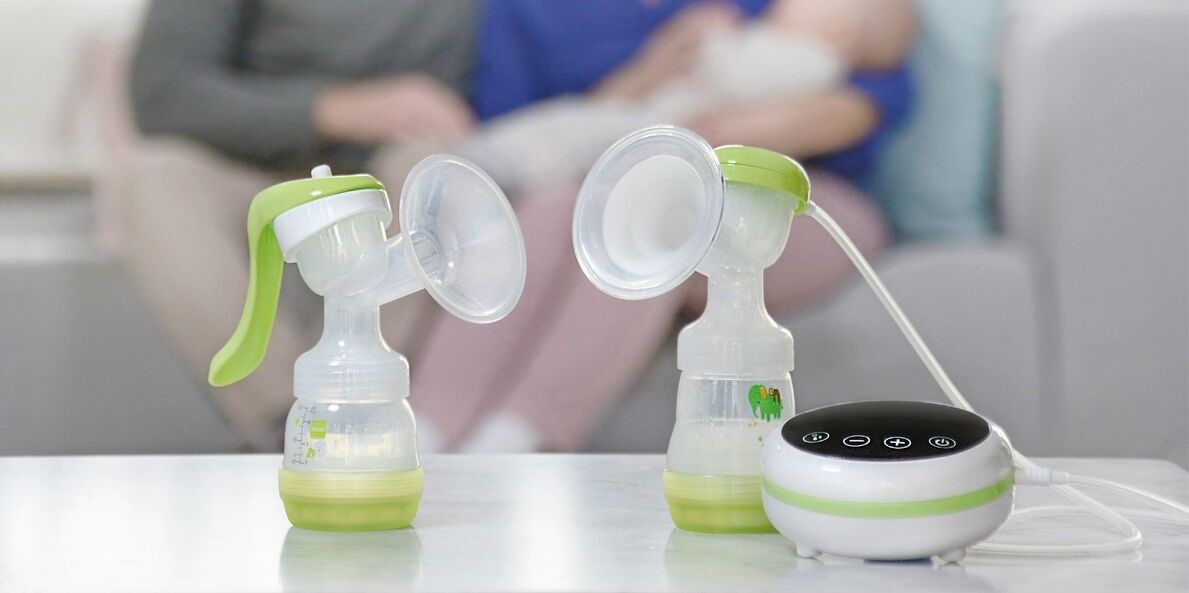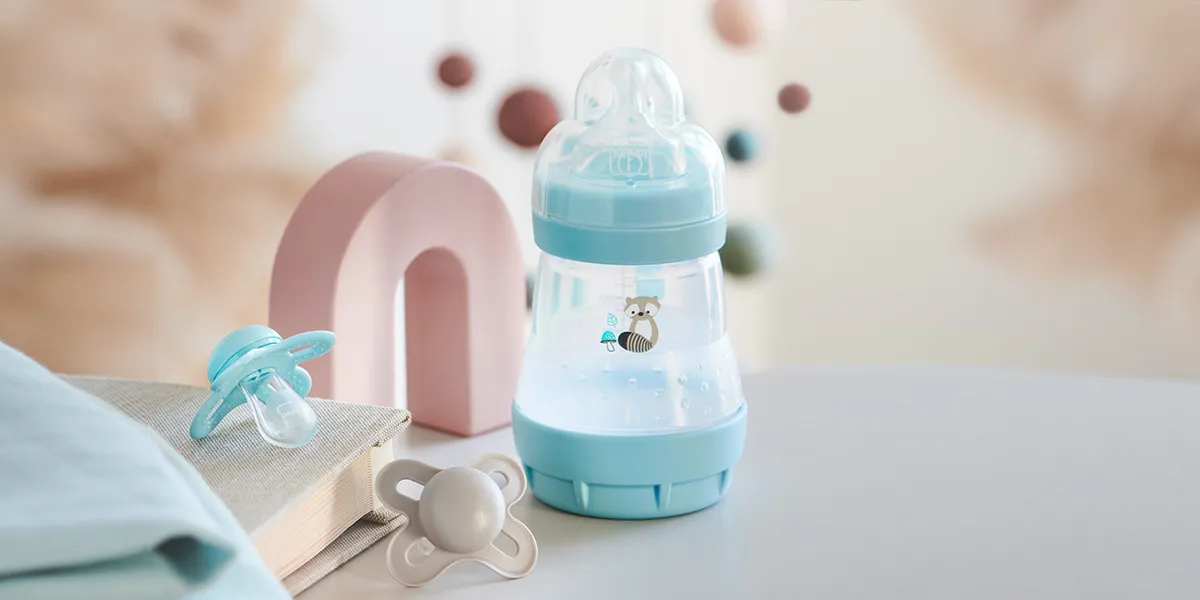There are many reasons why women do not want or are unable to breastfeed exclusively. There are women who simply cannot breastfeed at all, or who are temporarily unable to breastfeed. This can be due to anatomical causes, hormonal reasons, or complaints caused by breastfeeding. Fortunately, there are excellent pre-formula products available today, allowing mothers to breastfeed and bottle feed at the same time. How can you get the best of both worlds?
Six helpful facts about mixed feeding:
1. Breastfeeding exclusively
It is recommended that you only start mixed feeding once breastfeeding is well-established. The timing can vary between individuals, but is generally around 6-8 weeks.
2. Controlling milk production
One challenge when switching between breastfeeding and bottle feeding can be controlling or maintaining breast milk production. Supply is ultimately regulated by demand, i.e., latching your baby on (or expressing) less means less milk. It is therefore important to breastfeed your baby regularly, even when mixed feeding, or to express between feeds.
3. Complementing a meal by bottle feeding
If you are bottle-feeding your baby because you are afraid that it will not be satisfied by breast milk alone, the following rule applies: always breastfeed first and only then offer a bottle.
4. Regularity
A regular routine is optimal for the child and breast in order to establish a rhythm with milk production and digestion. Most babies thrive on recurring rituals and routines.
5. Formula / milk powder
Pre-formula is most similar in composition to breast milk and is therefore the first choice for mixed feeding. Just like "original" milk, pre-powder contains only lactose as a source of carbohydrate. "Stage 1" milk powder (first infant formula) can be used earlier, in the same way as pre-milk. However, in addition to lactose it also contains starch or maltodextrin. Follow-on milk ("stage 2" milk), which is recommended from the age of 6 months at the earliest1, also contains other forms of sugar or carbohydrates. From a purely nutritional point of view, it is not necessary to switch to follow-on milk, although it can be more satisfying (however, this effect is also produced by solids once they have been introduced). The advantage of pre-milk is that you can give it as you would breast milk – on demand.
6. Nipples / equipment
Select a nipple with the lowest possible flow rate. This prevents the pre-milk from flowing out of the bottle too quickly. The baby must exert a little effort to suck milk from the bottle, just like at the breast. This avoids unintentional weaning due to the bottle being "more comfortable".

Possible advantages of mixed feeding are:
- Greater independence for the mother
- Other caregivers can also feed the baby
- Even if it is completely natural, some women do not like breastfeeding in public – a bottle also opens up new possibilities here
- Work may be incompatible with family life
- Recovery for sore nipples
- Unintentional weaning can be avoided
Possible disadvantages of mixed feeding are:
- The baby does not want to drink from the breast because it is easier to drink from the bottle. However, with the right bottle and nipple this problem can be largely avoided.
- The baby absorbs fewer valuable nutrients from breast milk
- Possible digestion problems
- Additional costs due to purchasing formula, bottles, and nipple
- It may take a while for the switch between breast and bottle to work
If you are unsure whether your baby is growing and gaining weight well, or if you have questions about mixed feeding, it is best to consult your pediatrician. Midwives and breastfeeding groups are also a great source of tips and tricks for mixed feeding!




























